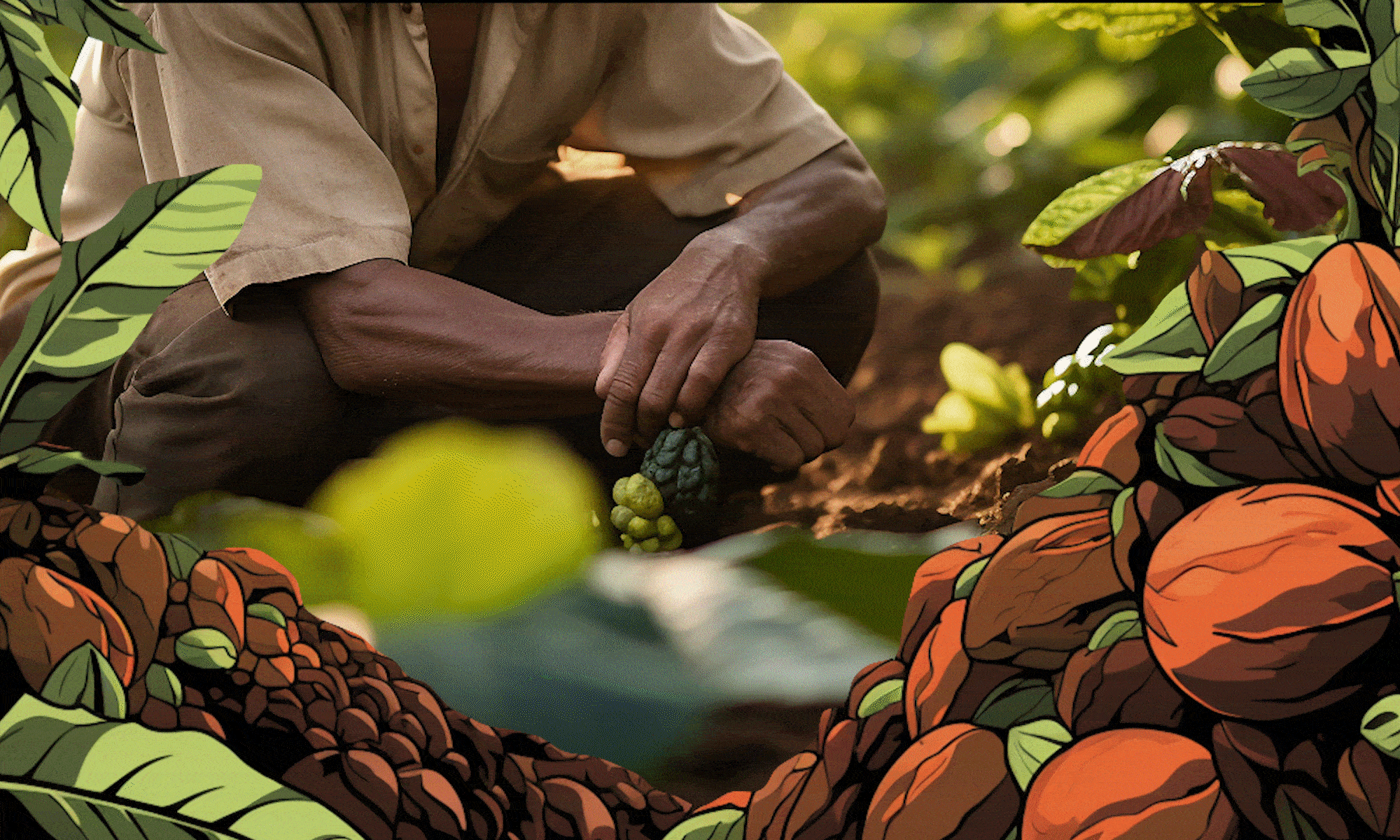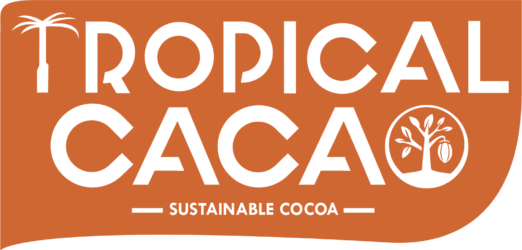How to Store and Preserve Cacao for Maximum Freshness 🏡🍫
Cacao products—whether beans, nibs, powder, or butter—represent a significant investment in quality and flavor. Proper storage is essential to maintain their rich taste profiles and nutritional benefits. This comprehensive guide covers everything you need to know about keeping your cacao products fresh, flavorful, and free from contamination.
Table of Contents
Understanding Cacao Degradation
Storage Methods for Different Cacao Forms
The Perfect Environment for Cacao Storage
Preventing Mold and Contamination
Understanding Cacao Degradation
Cacao is a delicate product that can lose its quality when exposed to unfavorable conditions. Understanding what affects cacao freshness is the first step to proper preservation:
The Four Enemies of Cacao Freshness:
- Oxygen: Exposure to air causes oxidation, which degrades flavanols and creates rancid flavors.
- Light: UV rays break down sensitive compounds and accelerate degradation.
- Heat: Temperatures above 75°F (24°C) can cause cacao butter to melt and separate in certain products.
- Moisture: Dampness creates the perfect environment for mold growth.
The quality of cacao products diminishes gradually rather than suddenly. While your cacao might remain safe to consume for extended periods, its flavor complexity and nutritional value peak when properly stored.
Storage Methods for Different Cacao Forms
Each form of cacao requires slightly different handling for optimal preservation:
Raw Cacao Beans
Raw beans retain their freshness longest when stored properly because their natural shell provides some protection.
Best Storage Method:
- Store in airtight glass containers
- Keep in a cool, dark pantry (55-65°F/13-18°C)
- Expected shelf life: 1-2 years when properly stored
Pro Tip: For long-term storage, vacuum-sealed bags can extend freshness by removing oxygen exposure.
Cacao Nibs
Once beans are cracked into nibs, more surface area is exposed to potential oxidation.
Best Storage Method:
- Airtight glass jars with rubber seals
- Store away from heat sources
- Expected shelf life: 8-12 months
Pro Tip: Dark amber glass containers provide additional protection from light.
Cacao Powder
With its fine particles and large surface area, powder is most susceptible to moisture and odor absorption.
Best Storage Method:
- Airtight containers with minimal headspace
- Store in cool, dry conditions
- Expected shelf life: 6-12 months for optimal flavor
Pro Tip: Consider dividing bulk powder into smaller containers to limit air exposure during regular use.
Cacao Butter
Due to its high fat content, cacao butter requires special attention to prevent rancidity.
Best Storage Method:
- Wrap in wax paper, then place in airtight containers
- Refrigerate for long-term storage
- Expected shelf life: Up to 2 years when refrigerated
Pro Tip: Cacao butter can absorb odors easily, so double-wrapping is recommended.
The Perfect Environment for Cacao Storage
Creating optimal conditions for cacao storage doesn’t require specialized equipment—just attention to these key factors:
Temperature Control
Ideal Temperature Range: 59-65°F (15-18°C) Temperature Effect on Cacao Below 50°F (10°C) Preserves flavor compounds but may affect texture 59-65°F (15-18°C) Optimal range for flavor and texture preservation Above 75°F (24°C) Accelerates degradation and may cause fat bloom
Humidity Considerations
Ideal Relative Humidity: 50-70%
Too dry conditions can cause cacao to lose volatile compounds, while excess humidity promotes mold growth. If you live in a particularly humid environment, consider using silica gel packets in your storage containers.
Light Protection
All forms of cacao benefit from darkness. Choose these storage options:
- Opaque containers
- Amber or cobalt glass jars
- Storage cabinets without glass doors
Common Mistakes to Avoid
Even experienced cacao enthusiasts sometimes make these storage errors:
- Using plastic containers: Plastic can transfer odors and sometimes chemicals to cacao products.
- Storing near strong-smelling foods: Cacao readily absorbs surrounding odors.
- Frequent container opening: Each opening introduces fresh oxygen and potential moisture.
- Refrigerating powder: Condensation forms when removing cold powder, introducing moisture.
- Freezing without proper sealing: Improper freezer storage can introduce freezer burn and odors.
Does Cacao Expire?
Unlike many food products, cacao doesn’t have a strict expiration point where it becomes unsafe. Instead, it undergoes quality degradation over time.
Understanding “Best By” Dates
Commercial cacao products typically display “best by” dates indicating peak quality rather than safety concerns. Properly stored cacao can remain usable well beyond these dates, though flavor complexity may diminish.
Shelf Life by Cacao Type
Cacao Product Optimal Quality Period Extended Usability Raw beans 1-2 years Up to 3 years Nibs 8-12 months Up to 18 months Powder 6-12 months Up to 2 years Butter 1-2 years (refrigerated) Up to 3 years Chocolate bars (70%+) 6-12 months Up to 2 years
Preventing Mold and Contamination
Mold represents the greatest safety concern for stored cacao products, particularly in humid environments.
Preventative Measures
- Start with quality: Purchase cacao from reputable suppliers who properly dry beans below 7% moisture content.
- Practice clean handling: Always use dry, clean utensils when scooping cacao products.
- Consider desiccants: Food-grade silica gel packets help maintain low humidity in storage containers.
- Inspect regularly: Check stored cacao periodically for signs of moisture or mold development.
Natural Antifungal Approaches
Some traditional cacao storage methods incorporate natural antifungal elements:
- Bay leaves placed in storage containers may help deter insects and mold
- Cinnamon sticks (kept separate from direct contact with cacao) can inhibit mold growth
Signs Your Cacao Has Gone Bad
Know when it’s time to discard cacao products by watching for these indicators:
Visual Cues
- White or green fuzzy growth (definite mold)
- Gray dusty appearance (potential mold)
- Unusual discoloration beyond normal color variations
Aroma Changes
- Musty or moldy smell
- Strong chemical or rancid odor
- Complete loss of chocolate aroma
Texture Alterations
- Clumping in previously free-flowing powder
- Unusual stickiness in nibs or beans
- Chalky texture development in cacao butter
Important: If you see definite signs of mold, always discard the cacao product. Mycotoxins produced by molds can be harmful even if you remove the visibly affected portions.
FAQ: Cacao Storage Questions
Can I freeze cacao powder?
While freezing is possible, it’s generally unnecessary and may introduce moisture through condensation when thawing. If you must freeze, use airtight containers and allow powder to return to room temp

